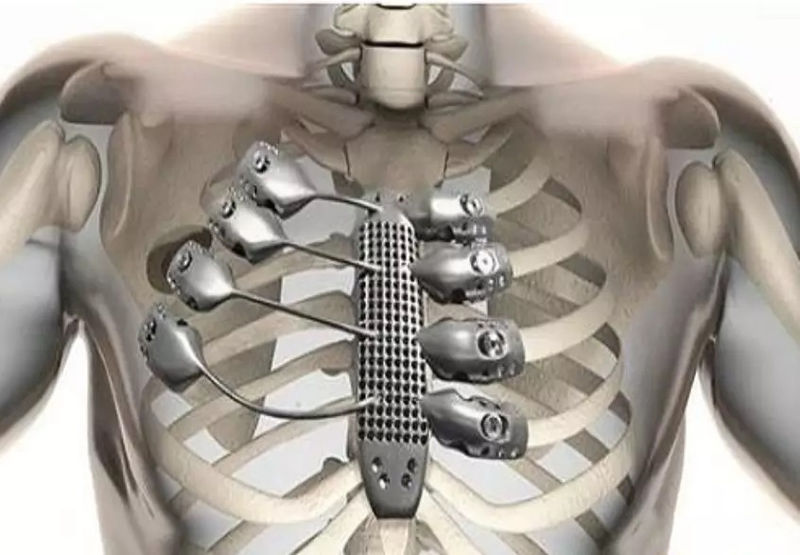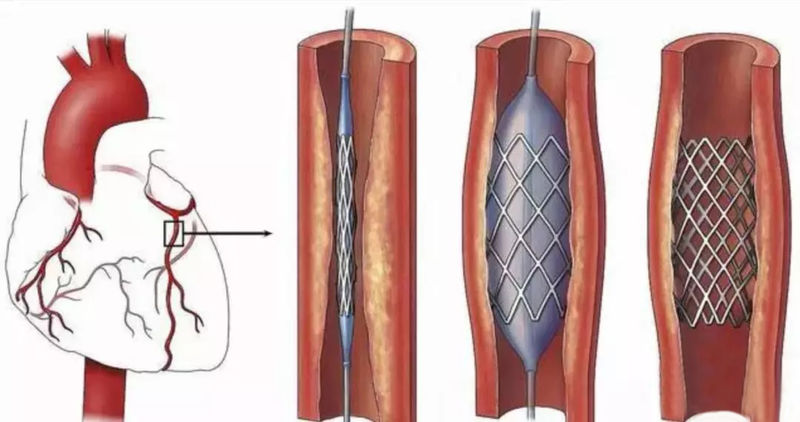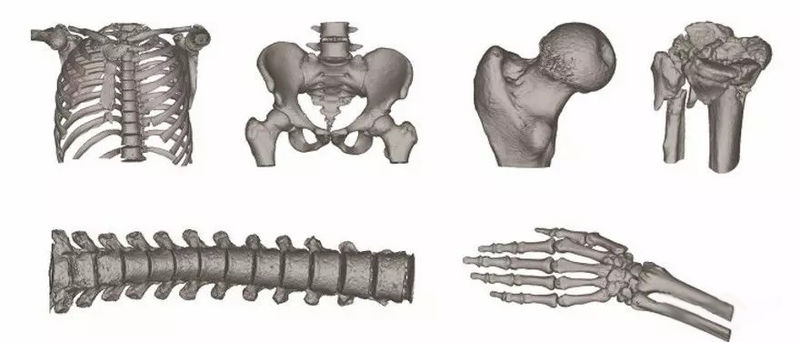Molybdenum rhenium alloy-a new generation of advanced medical metal materials worth looking forward to
- Categories:Application Technology
- Author:
- Origin:
- Time of issue:2020-06-19
- Views:0
(Summary description)Biomedical metal materials are also called medical metal materials or surgical metal materials. When biomedical metal materials are widely used in implant materials, long-term practicability and safety have become the first requirements for medical metal materials. Biometal materials generally have the advantages of high strength, good resistance to physiological corrosion and fatigue, wear resistance, and good biomechanics and processing properties, and are widely used in wound repair and orthopedic treatment.
Molybdenum rhenium alloy-a new generation of advanced medical metal materials worth looking forward to
(Summary description)Biomedical metal materials are also called medical metal materials or surgical metal materials. When biomedical metal materials are widely used in implant materials, long-term practicability and safety have become the first requirements for medical metal materials. Biometal materials generally have the advantages of high strength, good resistance to physiological corrosion and fatigue, wear resistance, and good biomechanics and processing properties, and are widely used in wound repair and orthopedic treatment.
- Categories:Application Technology
- Author:
- Origin:
- Time of issue:2020-06-19
- Views:0
Biomedical metal materials are also called medical metal materials or surgical metal materials. When biomedical metal materials are widely used in implant materials, long-term practicability and safety have become the first requirements for medical metal materials. Biometal materials generally have the advantages of high strength, good resistance to physiological corrosion and fatigue, wear resistance, and good biomechanics and processing properties, and are widely used in wound repair and orthopedic treatment.
Currently, there are three main categories of biometal alloy materials: stainless steel, cobalt alloy, and titanium alloy. Among them, titanium alloys are most well-known to ordinary consumers. However, stainless steel and cobalt alloy have high elastic modulus, poor corrosion resistance in physiological environment, and generally contain Ni, Co and other disadvantages such as physiologically toxic metal elements, and have been abandoned by clinical applications in recent years. There are indeed many advantages of titanium alloys, and they have always been a hot research topic. In general, the advantages of titanium alloys can be understood from both physical and chemical properties. In terms of physical properties, the density is small, which can significantly reduce the body load after implantation. The elastic modulus of titanium alloy is low, which is relatively close to the elastic modulus of human natural bone, which can significantly reduce the stress shielding effect. In terms of chemical properties, titanium alloys have good corrosion resistance. Under certain environments (oxidizing or neutral solutions), the surface of titanium can form a corrosion-resistant stable oxide film, which is an excellent biologically inert metal material. And its biocompatibility is good, without any side effects. Among them, non-toxicity and biocompatibility are the "bottom line" that any medical metal material must meet.

Metal surgical implants are related to the health and safety of the human body. National standard GB 4234-2017, medical standard YY/T 0605-2007 and ISO 5832-2005 "Surgical implant metal materials" all deal with metal surgical implants. The characteristics and requirements and detailed regulations are given, so I won’t repeat them here. Interested readers can follow this official account and reply to the five words "surgical implants" on the chat interface to obtain the originals of relevant standards.
Going back to the molybdenum-rhenium alloy mentioned in our title, even professionals with relevant experience first think of molybdenum and rhenium as two refractory metal elements. Their alloys are mainly used in infrared halogen lamp filaments and chemical vapor deposition furnaces. Heating elements, thermocouple sheaths, heat shields, spacecraft thrusters, nuclear reactors and other components that operate at extremely high temperatures. In the field of refractory alloys, molybdenum rhenium alloy is indeed a kind of superalloy with many researches and applications. According to public literature, research reports on the properties and technology of Mo-Rhenium alloys were published in domestic journals as early as 1990.
Recently, people discovered a molybdenum-rhenium alloy with a nominal composition of Mo-50.0wt% Re, which has good mechanical and biological properties. Relevant American companies have developed molybdenum-rhenium alloys for cardiovascular stents, and they have been used in clinical applications. Among them, the most convincing evidence is that the American Society for Testing and Materials ASTM has passed and published the "F3272 Surgical Implant-Molybdenum Rhenium Alloy" standard. The standard specifies the morphology, performance requirements, chemical composition and non-destructive testing of molybdenum-rhenium alloy implants in detail. It is not difficult to see that what the ASTM standard specifies is only the minimum standard that meets the requirements for use. The main purpose of this standard is to further promote and promote the application of molybdenum-rhenium alloy in the field of surgical implants through the form of document disclosure, encourage more scientific research institutions and manufacturers to participate in research and development, competition, and jointly improve molybdenum-rhenium alloy surgery. The technical level of the implant.

From the theoretical analysis of material properties, the reason why molybdenum-rhenium alloy surgical implants is worth looking forward to become a new generation of more advanced medical metal materials is mainly due to the following three factors:
1. Mechanical properties
Similar to almost all metal materials, plastic deformation processing can increase the strength of molybdenum-rhenium alloys. However, the particularity of molybdenum-rhenium alloy is that during plastic deformation processing, the molybdenum-rhenium alloy produces an unusual change during the deformation process, which is called twinning induced plasticity (TWIP). TWIP steel is one of the second-generation high-strength steels, because it can produce a large number of deformation twins during the deformation process, delay the formation of necking, and has excellent strong plasticity. The molybdenum-rhenium alloy also benefits from this effect. Just as the data in the above-mentioned F3272 standard specification, the molybdenum-rhenium alloy can reach double-digit elongation while the strength exceeds 1300Mpa. In other words, molybdenum-rhenium alloy has high strength and excellent plasticity, which is conducive to processing into various natural forms. In actual clinical applications, for fractures of the skull, mandible, wrist, fingers, pelvis, and ankle joints, surgeons must modify the shape of these implants according to the patient's specific bone structure. This requires metal implants to have very good sculpting capabilities.
At the same time, another factor affecting the use of surgical implants is the fatigue of metal materials. Because surgical implants are usually affected by cyclic loading, most implant fractures are caused by fatigue failure. Compared with existing titanium alloys, molybdenum-rhenium alloy has more obvious advantages in terms of fatigue resistance, which can greatly improve the reliability of implants, reduce the probability of implant fracture, and reduce the risk of long-term use of the product.

Table 1-Mechanical properties data of molybdenum rhenium alloys in different states
1. Physical Properties-Magnetic
Common metal surgical implants have brought huge challenges to doctors when using magnetic resonance imaging (MRI) technology in the clinic. The strong magnetic field of MRI equipment can put tremendous stress on magnetic materials. Therefore, the implant alloy must be a non-magnetic material in order to eliminate the torque, displacement or heat generated during MRI imaging. The molybdenum rhenium alloy is completely non-magnetic, so there is no problem in this respect. Another potential problem is artifacts or "bright light" in MRI images, which is a magnetic sensitivity effect of the implant. Artifacts can interfere with the interpretation of diagnostic results. Among the traditional three types of metal implant alloys: stainless steel, cobalt alloy, and titanium alloy, pure titanium implants produce the smallest MRI artifacts, while molybdenum rhenium alloy materials have lower magnetic sensitivity and produce MRI artifacts. The shadow is smaller than pure titanium, so it has a great advantage in clinical replacement.
2. Biocompatibility
As the "bottom line" requirement of surgical implants, the non-toxicity and biocompatibility of molybdenum-rhenium alloys are already beyond doubt. The molybdenum rhenium alloy has passed all the tests of "ISO 10993 Biological Evaluation of Medical Devices" and other related tests. Taking osteoconductivity as an example, studies have shown that molybdenum-rhenium alloy test nails are implanted into the femur of animals. The results show that after 4 weeks, 13 weeks, and 26 weeks of implantation, molybdenum-rhenium alloy and TC4 medical titanium alloy have similar properties. Of osteoconductivity.

In general, the large-scale application of molybdenum rhenium alloy surgical implants is worth looking forward to! At the same time, it is also worth investing money and time in research and development. Through a more advanced molybdenum rhenium alloy surgical implant, it will bring more Good clinical experience, benefit patients, improve medical technology, and change the world!
Scan the QR code to read on your phone
Contact Us
Address: Room 401, Building 10, Xinggong Science and Technology Park, No. 100 Luyun Road, Changsha High-tech Development Zone, Hunan
Email:sales@rheniumet.com

scan it Follow us
Copyright: Hunan Rhenium Alloy Material Co., Ltd. ICP No. 13005464-1 Website construction: www.300.cn



